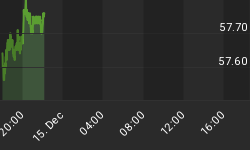
Source: Global Research
The picture is rather stark. This is a chart shown in an article at Global Research (www.globalresearch.ca) - Financial Implosion: Global Derivatives at 1,200 Trillion Dollars 20 Times the World Economy. It bears repeating.
Specifically the chart shows the assets of five of the USA's largest banks vs. their respective derivative position. Derivatives dwarf the asset position of the banks. Wachovia and HSBC (USA) are not even amongst the top five derivative players in the US. The top five in order are JP Morgan Chase, Bank of America, Morgan Stanley, Citigroup and Goldman Sachs. There is a huge drop off in derivative positions after the top five players.
The global derivatives market is estimated by some at $1,200 trillion ($1.2 quadrillion). Estimating the size of the market is difficult. The Bank for International Settlements (BIS) shows a size of $647 trillion as of December 2011. However, some market followers who have written books on the subject have estimated the market as being even larger at upwards of $1.2 quadrillion. At that level it is 20 times the size of the global economy estimated at $60 to $70 trillion.
The global derivatives market is unregulated and quite possibly under reported. The financial institutions have successfully lobbied for years to block any attempt at regulating the market. Roughly 75% of the market is interest rate contracts (i.e. forward rate agreements, interest rate swaps (the largest component) and options on interest rates). The next largest component is foreign exchange contracts and that only constitutes roughly 10% of the market. The third largest category is credit default swaps (CDS) and that makes up roughly 4% of the market. The rest of the market consists of commodity contracts and equity linked contracts.
As noted the BIS estimates the size of the global derivatives market at $647 trillion as of December 2011. But the BIS number only includes the over the counter market (OTC). It does not include exchange traded derivatives. Overall the global OTC derivatives market has a gross credit exposure of $3.9 trillion. What that effectively means is that if all of the derivative contracts defaulted the hit to the financial institutions would be $3.9 trillion. According to www.banksdaily.com the market capitalization of the world's largest banks who are the most likely to be involved in the global derivatives market is $2.6 trillion. The potential credit exposure of derivatives exceeds the bank's capital.
In the global derivatives market the big five US banks dominate the market. In a total global derivatives market using the BIS number of $647 trillion JP Morgan is the world's largest with at least $70 trillion of derivatives and possibly as high as $80 trillion. JPM's derivative position is against an asset base of $1.8 to $2.2 trillion. JPM is estimated to have credit exposure for their derivatives of 256% of capital. For the top five US banks the ratio is 316%. This far exceeds the estimated global credit exposure of derivatives when compared to the market cap of the world's largest banks.
The top five US banks are estimated to hold at least $290 trillion of derivatives making them 44% of the global market using the BIS estimate. The banks have netting agreements which are supposed to cover upwards of 90% of the market. Except the netting agreements are merely a piece of paper to cover the reality that if a major player collapsed it could threaten the entire system. Think of American International Group (AIG-NYSE) in the 2008 financial crash where netting agreements were meaningless in the face of AIG's collapse. AIG's share capital was wiped out. The bail out of AIG with taxpayer money was effectively a circle in order to protect the integrity of Goldman Sachs, Morgan Stanley and the other major derivative players.
JP Morgan initially reported a $2 billion loss on their derivatives book because of a hedge that had gone offside. JP Morgan later admitted that the loss was now $3 billion. A few days later a Wall Street Journal article raised the estimate to an $8 billion loss. Then several sources raised the loss to $18 billion. Trouble is JP Morgan has been quiet on any of the rumours neither denying nor confirming these numbers. So what is going on?
The global derivatives market is huge. Losses in the sector could quickly wipe out the capital of some of the world's largest banks which could require a bail out on a scale even larger than was seen in 2008. Some have described the global derivatives market as a huge gambling casino.
Could an accident in the global derivatives market cause the next financial panic? It happened in 2008 and since then very little has changed. Except the derivatives market has become even larger.
I will write more on this subject in the coming weeks.
















